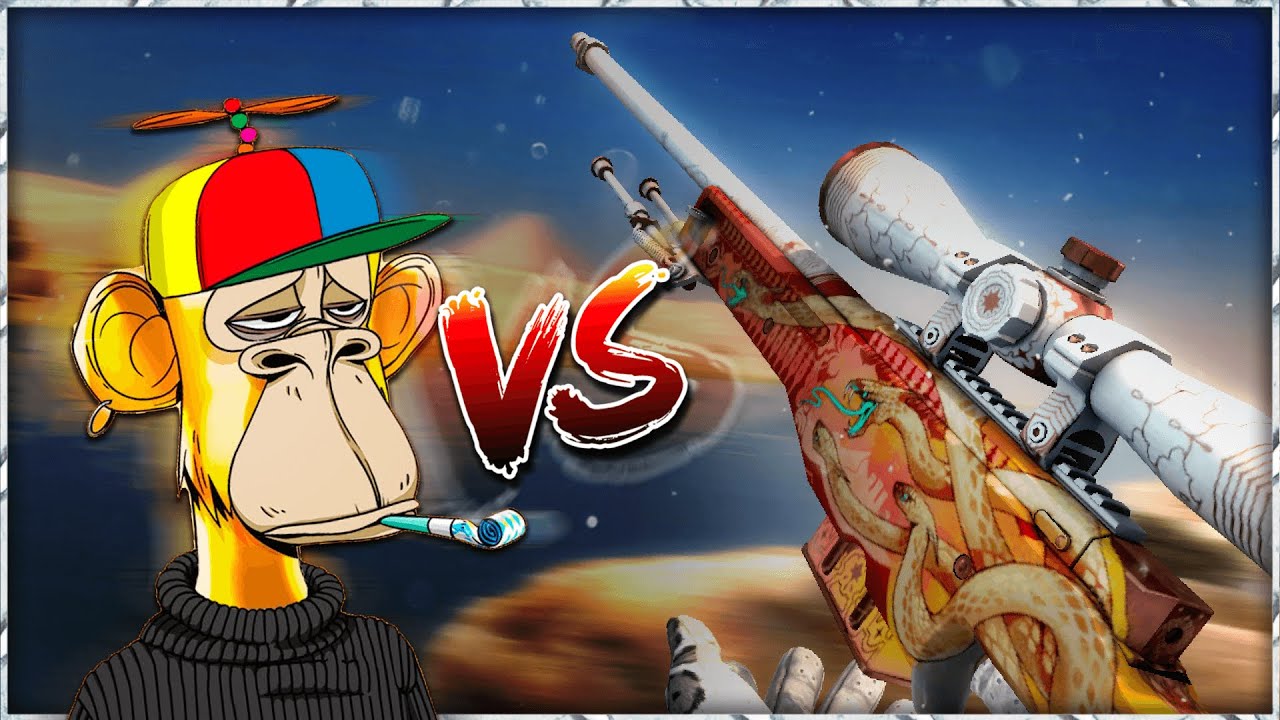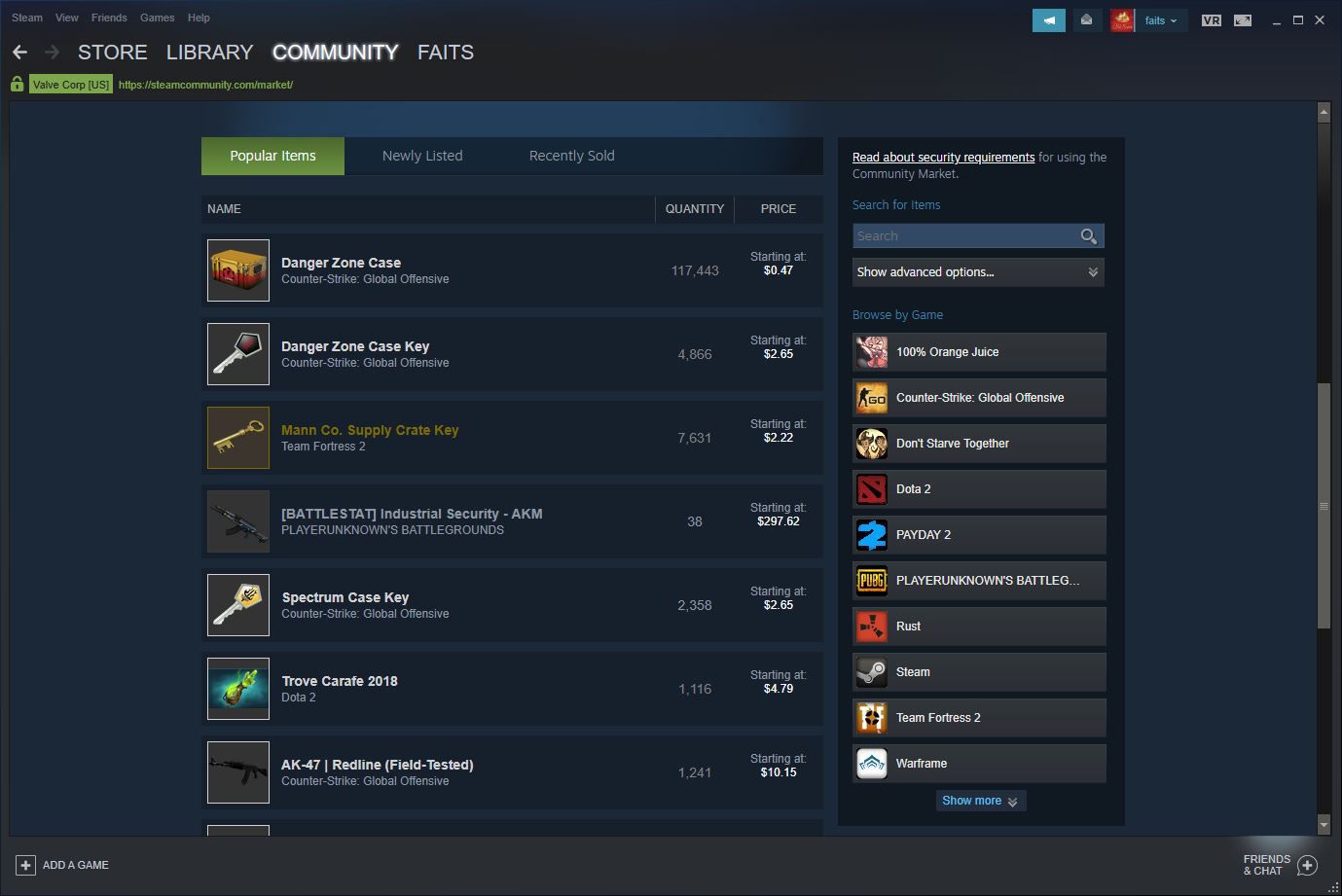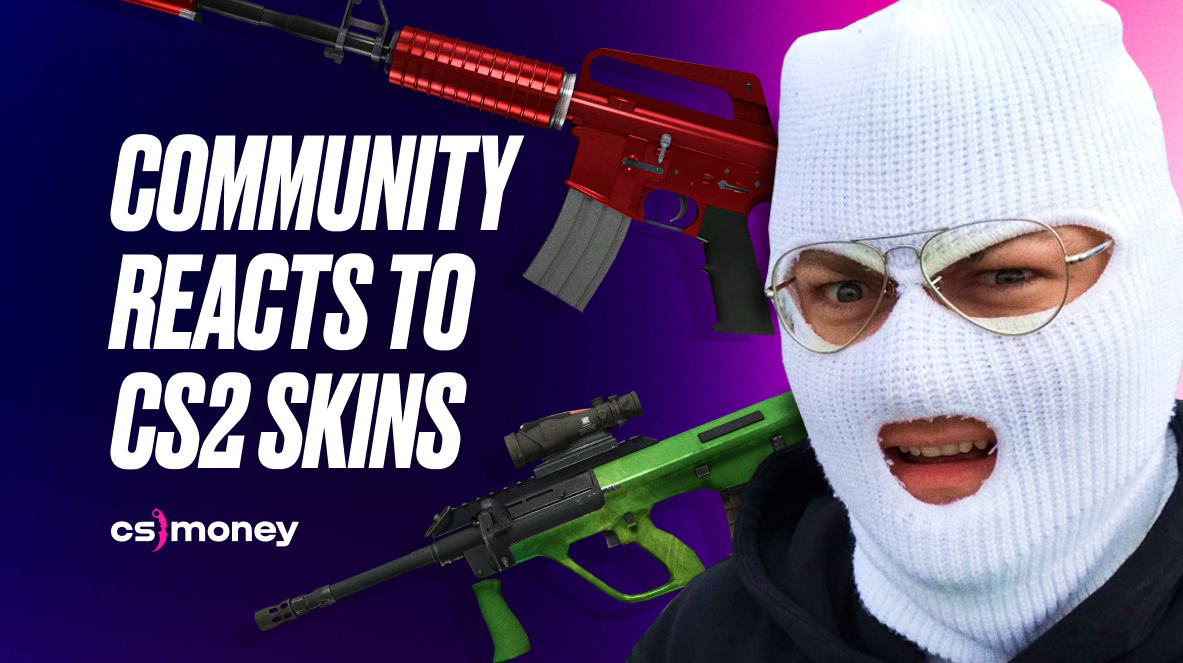Counter-Strike Skins are Proof NFTs Can Work
Written by: @thesolRead
In this article I want to discuss Counter Strike 2 skins, and how they are proof that NFTs as a core product CAN work. It's just a matter of when.
Preface:
Counter Strike is a popular game which introduced digital collectibles, or "gun skins" into their game on August 13th, 2013. These skins come in many different wears, and can only be owned and equiped by a single person. Since their inception they have made Valve well over a billion dollars- just from Cases (the way to unlock new skins). Including marketplace fees, it's safe to say skins have made Valve a lot of money.
NFTs are a digital collectible, which in 2022 reached over 12.6 billion dollars in volume. While NFT volume is not anything near that of 2022, this article wants to take a look at how a platform such as Valve's skin marketplace proves that NFTs at their core can work.

Part 1: Digital Ownership
I own something online. How do I prove to other people that it is infact me who owns it? Digital ownership answers this question, and there are many different answers. Everyone needs to agree, that it is I who owns an item- in CS2's case it's Valve- the only way to use and trade Skins. For an NFT's case- it's the blockchain ledger that the NFT exists on. Whether it's Solana, Ethereum, Polygon, or however many different chains there are now, all the blockchains have their own way of agreeing on who owns a specific token.
Digital ownership is crucial to allow for the trading, listing, buying, and selling of digital goods. Without this- neither NFTs nor CS skins could operate as they have.
Part 2: Marketplaces
The Valve Steam Workshop and NFT marketplaces act incredibly similarly. They both are a place to buy, list, and trade digital assets to strangers through a safe and effective means. They also are similar in that they have marketplace fees- which almost all marketplaces take nowadays. An interesting note is that many Counter Strike skins are community made- and Valve will split 50/50 the marketplace revenue for a specific skin with the person who made the skin. Sound familiar? It sounds very similar to creator royalties for NFTs.

Part 3: Utility
I think the biggest difference between NFTs and Counter Strike skins is their utility. Many NFTs have no intrinsic utility, and are commonly used as profile pictures and online identities. Counter Strike skins can be used in game, for one of the most popular multiplayer games created. While NFTs have a much wider use-case, it's easier to know what you are getting when buying a CS skin. You are getting a skin, that you can use in game. For NFTs, the false promises of roadmaps and innovation can quickly deteriorate the value of NFT. While Valve's skins are limited in utility, they are very firm in what they are- which I think gives some security to holders. I also think the fact that NFTs are usually tied to their underlying cryptocurrency makes their prices so volatile- where as Valve's skins are tied to your local currency.
Part 4: Community
The CS skin community and NFT skin community are both very large, and still growing. With both trying to make money, or create the best collection possible, both communities gather around a central point- their digital assets. Dedicated servers, discords, and even live streams gather around Counter Strike skins. And it's easy to say where NFT enthusiasts tend to gather. The ability to meet and discuss their assets is another example of how CS skins and NFTs are similar.
Conclusion
There are many similarities and differences between the NFT ecosystem and the skin trading ecosystem created by Valve. While I think they are not identical, I think Counter Strike skins are a prime example of how NFTs could work if given the right use case. People have discussed houses and physical assets being solder using blockchain technologies, and this very well may be the future. This article is just to dissect the similarities between the two ecosystems, and how a system similar to NFT's blockchain technology CAN exist in the real world- and exist well.
NFT founders will continue to come up with different ideas to back their digital assets, but to them I say good luck beating one of the most popular first person shooters of this century.
If you enjoyed this article, follow us on twitter to be notified for the next time we post. Want to post an article of your own? Fill out our publishing form in the top right. Thanks for reading!
